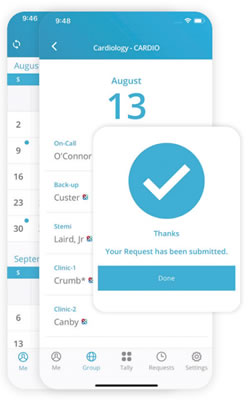The coronavirus pandemic has resulted in a major increase in healthcare providers offering telehealth services to patients. Virtual visits are being offered to reduce the number of patients visiting hospitals and physician offices to limit transmission of the virus to ensure patient safety. The increase in use is out of necessity, but new research confirms telehealth services are popular with providers and patients alike.
TigerConnect, the provider of the most widely adopted communication platform in healthcare, recently commissioned a comprehensive Harris Poll survey to explore attitudes to telehealth among patients and healthcare providers. The survey was conducted on 2,039 U.S. adults aged 18 or older between July 23-27, 2020 and 500 healthcare clinicians between June and July 2020.
88% of healthcare providers who were already offering telehealth services to patients saw an increase in the use of telehealth services due to the coronavirus pandemic, with 71% of providers saying there was a large increase in use. It is understandable that so many providers and patients have embraced telehealth in order to reduce infection risk and prevent transmission of the virus, but even when the pandemic is over it is likely that use of telehealth services will continue at the same or even an increased level. Over two thirds of providers (71%) believe use of telehealth services will continue at the same or even a higher level when the pandemic is over.
There is also strong support for telehealth services among patients. 87% of patients who tried telehealth said they were satisfied with the experience, with 7 out of 10 patients saying it is important for providers to offer telehealth services to patients. Many patients appear to prefer virtual visits to in-person visits. Only 40% of patients said they prefer to meet their providers face to face.
Patients may be apprehensive about trying telehealth, but once they have their first virtual visit they are keen to go virtual again. Patients who have had one telehealth or video consultation in the past year were twice as likely to express a strong preference for a virtual visit over an in-person visit.
When patients were asked if there was anything about telehealth they did not like, almost half of patients could not think of a single criticism about their experience. The main advantages of telehealth among patients were convenience (50%), allowing appointments to be kept that may otherwise have been cancelled (36%), and the ease at which health check-ups could be scheduled (34%). 52% of patients said they believe telehealth was a safe alternative to an in-person office visit.
Boomers (Over 55s) and Gen Z (Under 24s) were the age groups least satisfied with telehealth. The most common complaint among Boomers was excessive complexity, while the most common complaint with Gen Z users was a lack of features, showing there is clearly further scope for refinement.
The survey on clinicians revealed there is a majorly fragmented market, with 140 different telehealth solutions in use. 14% of respondents said they are currently using multiple telehealth solutions. That may well change after the pandemic is over and the notice of enforcement discretion of the HHS’ Office for Civil Rights expires. The notice of enforcement discretion for telehealth services temporarily allowed telehealth solutions to be used that may not be fully compliant with HIPAA requirements.
65% of respondents said they were happy with their current telehealth solutions and almost 90% of users of the TigerConnect platform said they were happy with the TigerConnect platform.
The survey also revealed there is strong bipartisan support for telehealth, with 77% of Democrats and 66% of Republicans believing healthcare providers should offer telehealth services to patients. There are still some challenges to overcome to ensure that telehealth services are accessible to all. 53% of surveyed patients living in urban areas had utilized telehealth services compared to just 31% of patients in rural areas, which suggests there may be issues with broadband availability and cellular reception in rural areas which is limiting uptake.
“The people have spoken: telehealth is here to stay,” said TigerConnect CEO Brad Brooks. “The overnight move to telehealth is one of the fastest cultural shifts in healthcare in decades, and this research reveals it has already transformed the habits of millions of Americans who can now access great healthcare as easily as they can catch a ride to the airport. It’s up to our industry to seize this moment and ensure that it’s as easy as possible for anyone to access or administer world-class healthcare anywhere and anytime to improve health outcomes for all Americans.”
The post TigerConnect Survey Confirms Widespread Support for Telehealth Among Providers and Patients appeared first on HIPAA Journal.
 .
.
